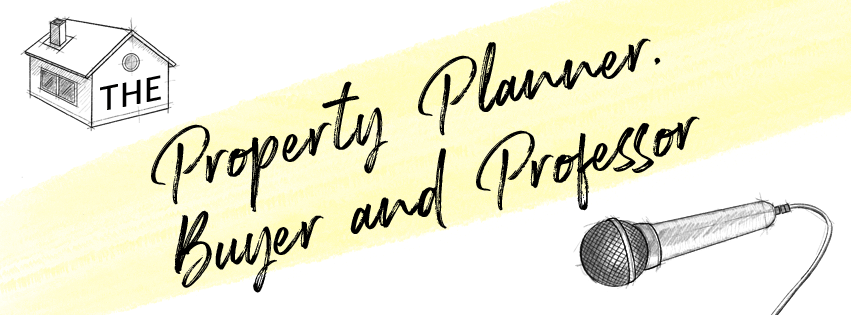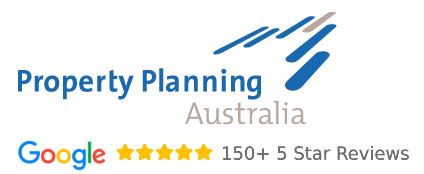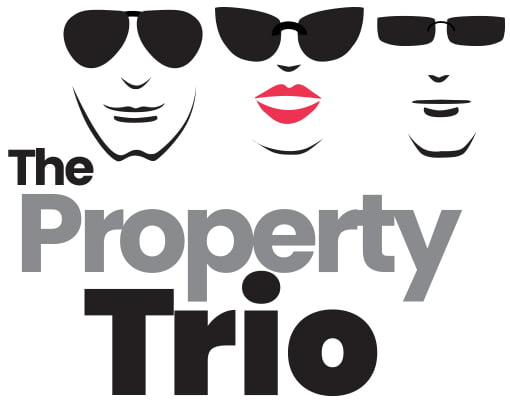
The Property Planner, Buyer and Professor dive into the capital growth v cash flow debate when it comes to planning your investment strategy. Who will have their arm raised in victory?
In this episode David Johnston, Cate Bakos and Peter Koulizos take you through:
- The Property Professor makes the case for capital growth, by comparing property value and rental return over 20 years if you had purchased a capital growth v cash flow property for $600,000.
- The Property Buyer explains how you can achieve the same outcome with a cash flow strategy – not everyone can afford to hold a capital growth property, but everyone can make great property decisions that grow your wealth.
- Don’t forget about gearing! Whether the property is positively or negatively geared carries a large bearing on the end results.
- How the cost of holding a capital growth focused property decreases over time – negative gearing is not forever.
- Counter intuitive but true, how the rental yield of a capital growth focused property increases faster than yield on a cash flow property.
- How bank policy and assessment can impact your ability to execute your strategies and why you need a strategic mortgage broker in your corner.
- How your age and stage of life is a critical factor to consider when piecing together your investment strategy.
- Who, I mean which strategy, won? You will need to tune in to find out the Property Planner’s adjudication!
- And of course, our ‘gold nuggets’
Listen and subscribe
Apple  Android
Android 
Resources:
- Capital growth v rental return – excel
- Property calculator – capital growth v rental return – excel
- Capital growth v rental return comparison
- Negative gearing table
- Finding easy cash flow AND capital growth
- How Do You Create More Cash Flow Through Property with Cate Bakos?
- The importance of understanding cashflow
- How would you invest $1M?
- Why are investors going to the regions for cashflow-neutral? Some are right here in Melbs!
- Dissecting 10 years of Core Logic data – capital cities & regional areas (Ep.42)
- Diversification 101 – How and why to plan for diversification within your property portfolio (Ep.43)
- Why the family home is often the biggest piece of the investment puzzle (Ep.22)
- Why you need to plan for your future home when buying an investment property
- How to avert mistakes if you want to rent out your former home
- Why short-term investing has long-term consequences
- Mixed messages for spring property buyers
- Where buyers can capitalise on property opportunities in Australia’s regional locations
- Cash flow the key to winning the property investment game, says SMSF investor
- BrickX buy first regional property at Soldiers Hill, Ballarat
- Mortgage Strategy 101 – Ep 4. Optimise Investment Deductions
- Mortgage Strategy 101 – Ep 9. – Maximising your tax deductions by using a redraw facility
- Offset accounts – God’s gift to mortgage strategy! (Ep.40)
- How will your mortgages serve you in the long run?
- Five mortgage strategies that can grow your wealth
- How mortgage strategy shapes your ability to hold property, and grow your wealth for decades into the future! (Ep.24)
- Unpacking land to asset ratio (Ep.16)
- Mortgage Strategy 101 – Ep 6. Offset Optimisation
- Why your Mortgage Strategy is more important than your interest rate! (Ep. 9)
- What is Capital Gains Tax?
- Mortgage Strategy 101 – Ep 12. How to keep property as you accumulate!
- Mortgage Strategy 101 – Ep 8. How to keep a stepping stone home when you upgrade
- Mortgage Strategy 101 – Ep 5. Risk Management
- Why your approach and assessment of risk is paramount to property success! (Ep.10)
- How to succeed with Property and Create your Ideal Lifestyle
- Mortgage Strategy 101 – YouTube video series.
Show notes
- The case for capital growth – purchasing a $600,000 property you hold, after 20 years:
- Property A – capital gains – rental 4%, capital growth 7%:
- Value – $2.3M – you are up $1.7M
- Rent – $24,000 a year = 1.1M
- Property B – cash flow – rental 7%, capital growth 4%:
- Value – $1.3M – you are up $0.7M
- Rent – $42,000 a year = $1.3M
- The difference:
- Value – $1M difference over 20 years if you choose a capital growth focused property.
- Rent – $265,000 difference over 20 years if you choose a cash flow focused property.
- Important to note – gearing! This scenario is assuming the property is positively geared and does not take into account out of pocket expenses if the property is negatively geared, which a capital growth focused property is more likely to be. Check out the numbers on the spread sheet.
- Check out the resources on gearing – It is going to cost you: $26 a week to hold on to the capital growth property in the first year, then $22 second year – because rents increase.
- Assuming yield stays at 4%, rent grows faster because it is a percentage of total value and the capital growth property is growing in value faster. After a period of time, you earn the same rent.
- When capital growth won’t work:
- Capital growth is great, but only if you can afford to hold them long term and/or it doesn’t preclude you from growing your portfolio
- Some people CAN’T sustain CG cashflows – if you are cash flow poor.
- Older investors who don’t’ wish to sell may not want to have their work life extended and may have to either consider selling the asset and reinvesting (with all costs and CGT considered), or buying something that can organically pay itself down as rents are used to pay the loan down faster.
- Twist 1 – We’re going to assume that Buyer X buys an A, and Buyer Y buys two B’s. Let’s assume for the sake of ‘savings, that the B’s second purchase occurs in 6 years’ time. This time is relevant, because it takes 6 years of equity growth from IP #1 for Buyer Y to save the 20% plus stamps to reinvest.
- Buyer X ends up with:
- Value of asset – $2,321,811
- Total rent – $1,076,764
- Buyer Y ends up with:
- Value of asset – $2,353,680
- Total rent – $2,152,968
- Twist 2 – We’ll then assume that two Boomers are two older investors who each plan to retire in 10 years.
- Boomer 1 buys an A and sells it in ten years, paying out the agent selling fees and CGT. They reinvest into shares returning an annualised total return of 7% pa inclusive of gains and dividends.
- They pay more tax but the annualised return of 7% through shares without the ongoing management and holding costs clearly benefits their income. I haven’t counted tax on either of the incomes but it won’t be dramatic given the annual returns and the retiree tax status.
- Nest egg after 30 years: $2,149,943, calculating the same drawings each year
- Boomer 2 buys a B and holds it as a “Buy and Hold” until they pass on and the unencumbered asset goes to their estate – let’s say in 35 years’ time (assuming they leave this earth at age 85).
- Avoids stock market fluctuations but cops land tax, maintenance costs and property management fees in addition to their stress around any tenant issues and vacancies.
- Nest egg after 30 years: $1,799,029
- What have we learnt? There is no black and white answer, no one size fits all approach – there’s so many great points.
- Finance – seek advice on how your decisions will impact your ability to obtain further finance – this can be a big barrier to investment, if you find out that your borrowing capacity has been maxed out. Positive cash flow from rental income can help, but then lenders reduce it to 60-80% plus benchmark assessment rate, then it’s more like half of a $1.
- Timeline is one of the most critical factors, if you have time, you can afford to focus on capital growth, if you have less time, you want to transition to cash flow focused assets anyway.
- Cash flow we know the yield straight away, with capital growth you are taking a punt which relies on expertise (not a crystal ball).
Cate Bakos – The Property Buyer’s Golden nugget: one critical ingredient is fourth dimension, time. Capital growth costs in the beginning, you’ll hit a point where it turns into cash flow neutral and then into positive territory. You cut your lifestyle to cover holding properties, the day comes where your portfolio ticks over to cash flow positive.
Peter Koulizos– The Property Professor’s Golden nugget: whether capital growth v cash flow depends on your personal circumstances, encourage people to use spreadsheets, workout what is best for you.




